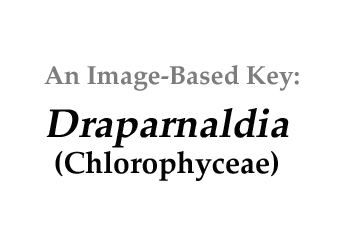|
Home / Greens / Filamentous / Branched / Draparnaldia |
||||
|
|
||||
|
|
|
|
|
|
|
Click
on images for larger format |
||||
Name derivation: |
||||
Classification: |
||||
|
||||
|
||||
|
||||
Similar genera: |
||||
|
|
||||
Habitat: |
||||
|
|
||||
|
Citing Phycokey: |
||||
|
Baker,
A.L. et al. . Phycokey
-- an image based key to Algae (PS Protista),
Cyanobacteria, and other aquatic objects. University of New Hampshire Center
for Freshwater Biology. http://cfb.unh.edu/phycokey/phycokey.htm
|
||||
References: |
||||
|
Guiry, M.D. and G.M. Guiry 2014. AlgaeBase.
World-wide electronic publication, National University of Ireland, Galway.
http://www.algaebase.org; searched on 19 December 2012. Hazen, T.E. (1902). The Ulothricaceae
and Chaetophoraceae of the United States.Memoirs of the Torrey Botanical Club 11: 135-250.
|
||||
















